Rocky Mountain Audio Fest 2013c
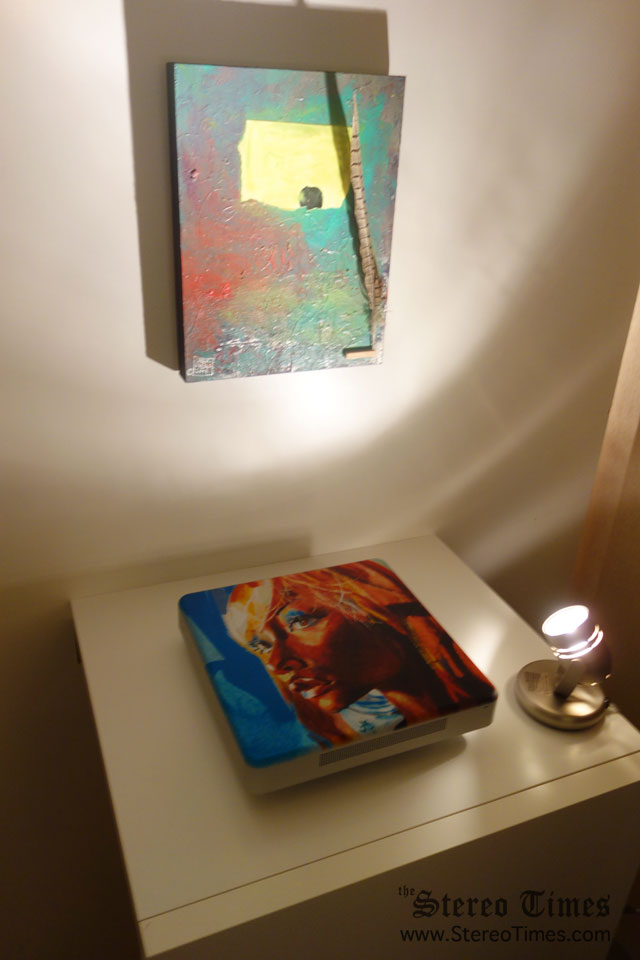
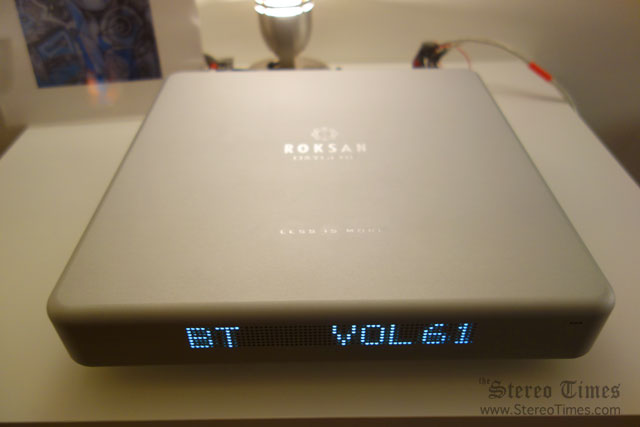
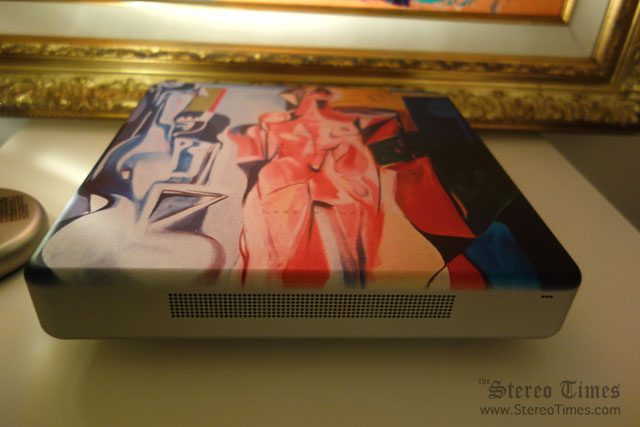
The Art of Sound
Roksan showed off from their Oxygene integrated ($5k) with a laser-engraved exterior from featured artist Jay Paul Apodaca.



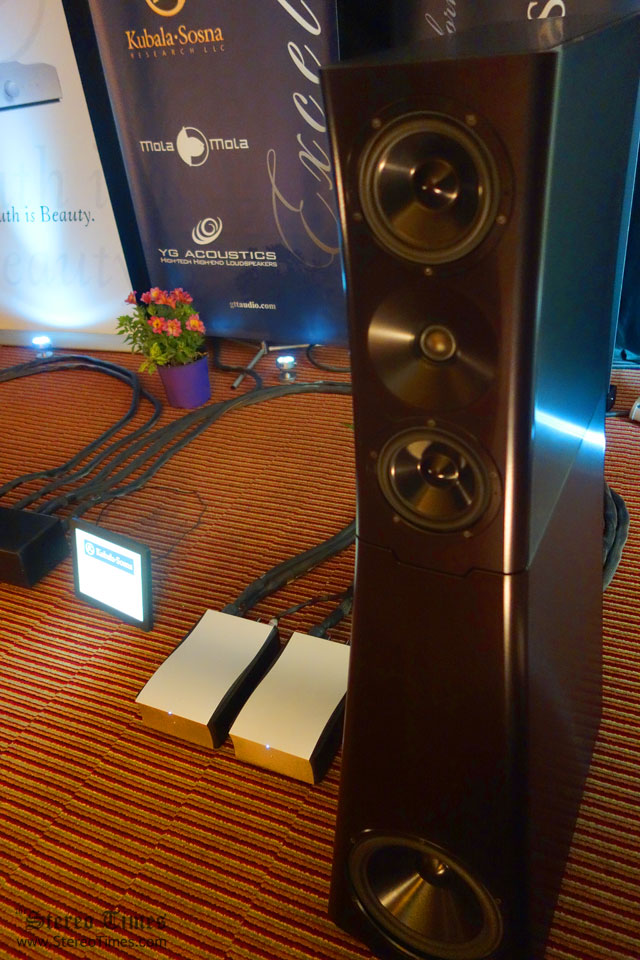
Dick Diamond of YG Acoustics (left) and Joe Kubala (right) can always be found right outside the GTT Audio Audio/Video suite. This year’s setup and sonics were as impressive as anytime before and that’s saying plenty considering how less expensive this system was this year. The YG Acoustics Sonja 1.2 ($73k) was driven with dynamic ease and composure by a pair of NCore-powered Mola Mola mono amps ($15k), which I wrote about on a recent visit to Parrish’s Long Valley, NJ home (see that report here). As expected this system was wired throughout with Kubala-Sosna cabling and, as expected, the sound came alive compliments of the YG’s well-developed and gutsy low-end. Without a direct side-by-side comparison however, it’s really hard to note the differences between the Mola Mola components versus the Swiss-made Soulution components driving YG loudspeakers. Remarkably however, after having a side-by-side shoot out, I quickly determined there are differences – and they’re not slight (see my report above).
If you’re ever in the northern NJ area however, I am sure you can scedule an appointment with Bill Parrish. The Mola Mola’s are quite extraordinary sounding the way they dynamically pressurized Parrish’s huge lisening room. They get you as close as possible to the holy grail without having to shell out lots of… um…mola.
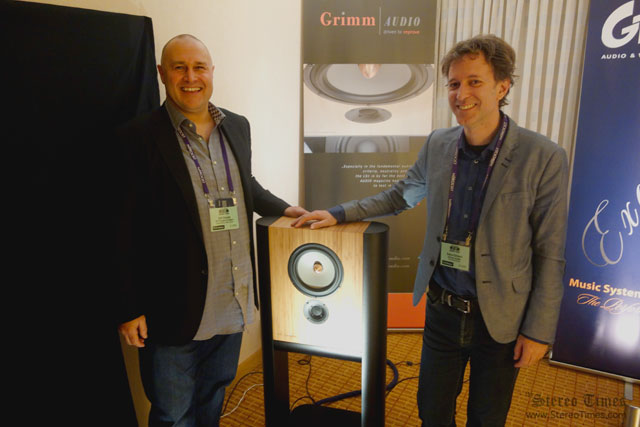
Bill Parrish of GTT Audio/Video and Eelco Grimm smiling broadly besides his Grimm Audio LS1 three-way active loudspeaker system ($40k).
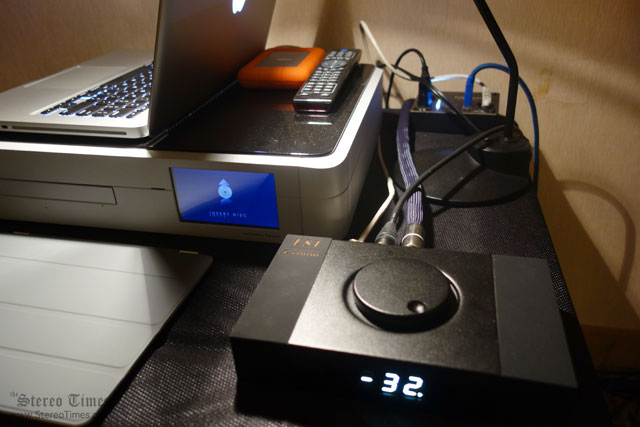

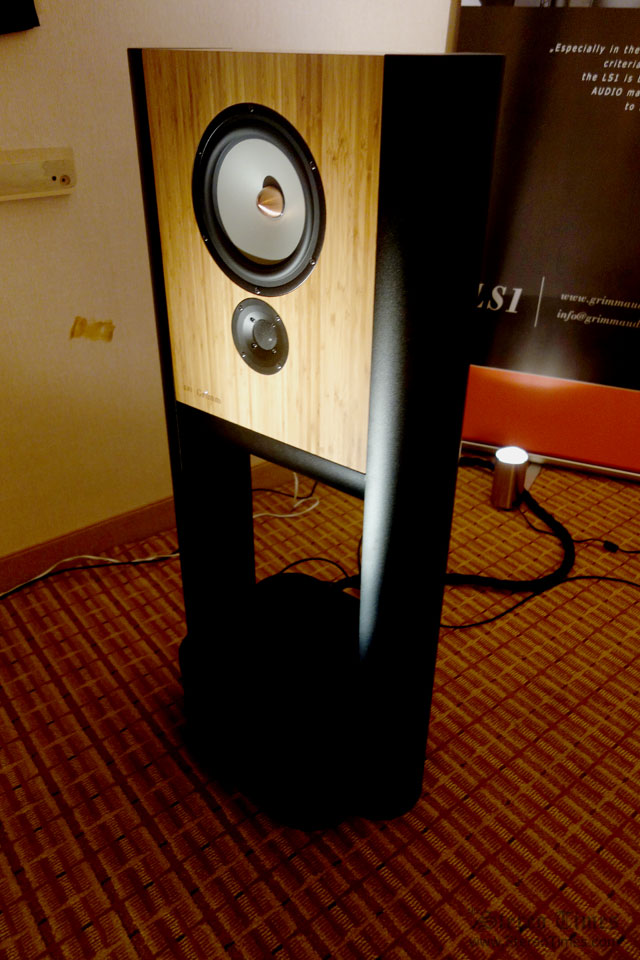
This is not the first time I have heard the Grimm Audio system. My first chance came at Munich’s High End 2013 show, back in May. The most obvious thing I noticed was: there was no equipment in the room. No amps. No cables. No fuss. Just a source. Surprisingly, the system was remarkably devoid of any digital gremlins that would qualify the sound as hard or bright. On the contrary, I found the sound natural and organic on certain songs I was somewhat familiar with. Parrish loves tuning up great 60’s jazz songs that often feature a sizzling trumpet intro, then challenge me on who the particular artist is. On this occasion, he played something that, to me, sounded just like the late, great Kenny Dorham (although my exposure to his body of work is still somewhat limited). KD, I shouted. Parrish replied Nope. Lee Morgan, I cried? Nope. I know…um, Donald Byrd I murmured. Nope. It’s Freddie Hubbard, Parrish stated. Well, Freddie’s my favorite trumpeter so how can that be him? Thought I owned most of his music (especially anything that sounds this fantastic!). Just goes to show how great ’60’s jazz still is – and how much of it I still haven’t heard.
Here at RMAF, Bill Parrish has a library of musical gems. Moreover, his musical saavy and tastes for classic ’60s jazz is admirable. Tuning up a great song, I began to really appreciate what the Grimm Audio system could do in terms of reproducing minute details that usually remain obsure on most systems. Little details that made themselves abvious in a very natural and unobtrusive manner. This, for me, makes the Grimm Audio system among the most transparent I have encountered – regardless of price.

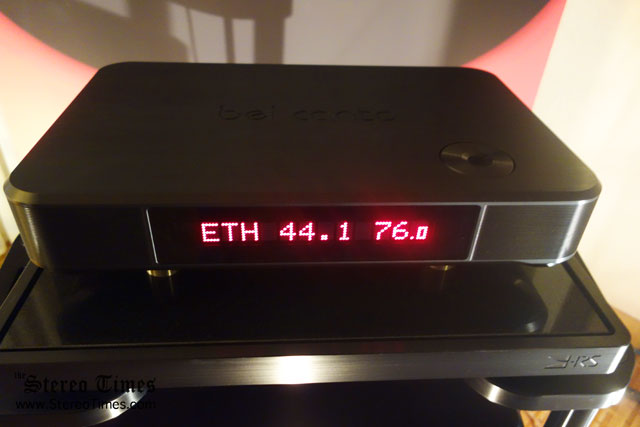
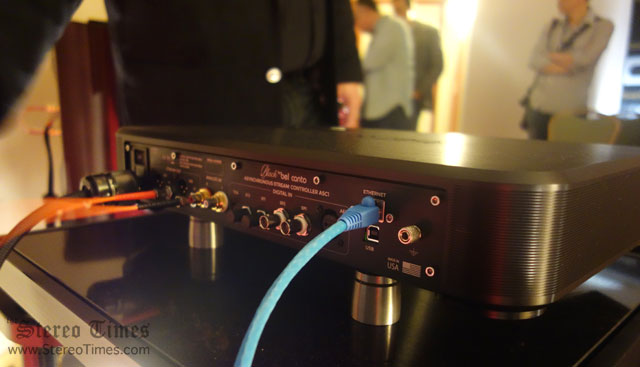
Got a second glimpse at the new offerings from Bel Canto’s Black Label Powerstream series. Each Powerstream mono amplifier ($15k ea) recieves digital data from the Powerstream controller ($20k) via optical cables. This is said to keep the signal path less uncontaminated than conventional interconnects. Upon reaching the amplifiers Class-D (Hypex) input, the signal is finally converted to analogue. Using a pair of excellent sounding TAD CR1 monitors, I really couldn’t get a grasp on what was going on sonically due to all the people in this room. However, I will say this: Bel Canto is on to something special. If for no other reason, they’re implementing similar techniques implemented by Behold of Germany a decade ago: using digital as opposed to analogue connections between pre and power to remove inherent analogue distotions. To date, I haven’t had the urge nor the desire to part with my Behold gear for more than 8 years and counting. I know this may be considered rare in these parts but I’m in a state of what you might call contented.
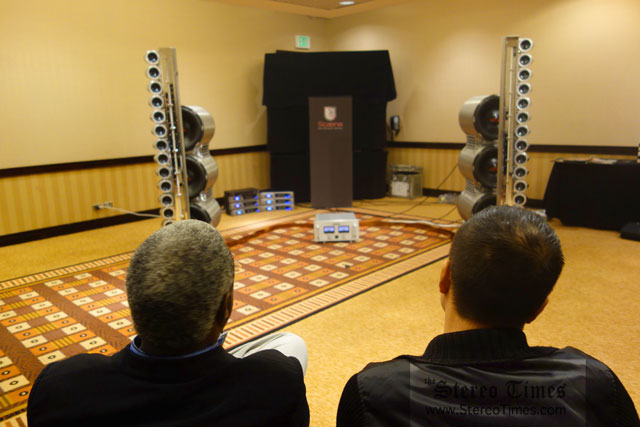

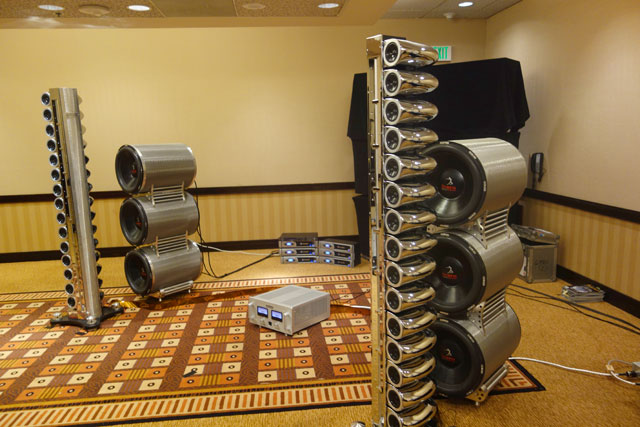
Get out the Windex….
The all-chrome Scaena Silver Ghost speaker system ($140k) once again threw a huge picture of music that was as open and alive and quite unlike anything I have heard when it comes to depth of field. Considering how often I’ve heard these big beauties at shows and homes, the experience always prove exhilarating and over here in the Hyatt was no exception (outside the main RMAF hotel). An Audio Research Ref 75 stereo amplifier drove the mid/highs with great fidelity while a half-dozen Crown SLX-2000 Class-D amplifiers handled six cannon-sized woofers. Integration was spot on, though there were some boominess coming from certain tracks (I blame the room’s acoustics as it appeared soft and heavily drapped). The excellent dCS gear has maintained its status as the digital of choce for Scaena systems over the years, while the Kronos ‘table has become a constant companion for the last three or four appearances.
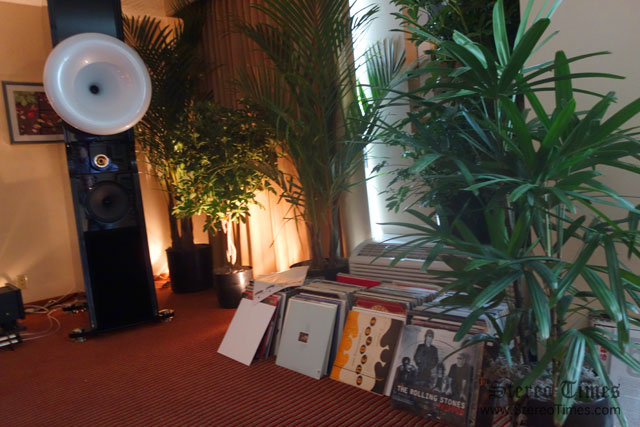
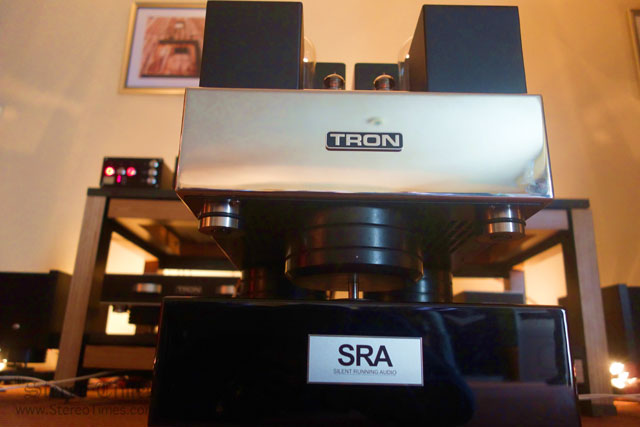
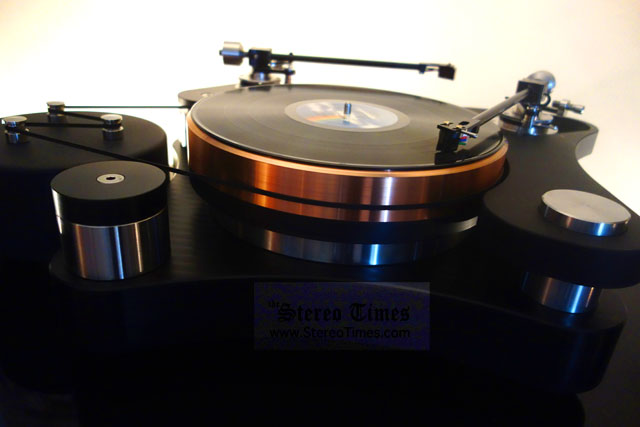
The many roads that lead to nirvana….
The sound that came out of Jeff Catalano’s High Water Sound suite was as close to what I’ve always thirsted after. So much in fact, I could not sit down in this room for fear of never getting up. Jeff’s long and winding road was founded upon Tron tube electronics, that gorgeous looking TW Acustic ‘table and Cessaro horn loudspeakers. I say this because the most impressive aspect of this system’s performance was how much it reminded me of my own. This was brought to my attention by more than three people who heard this system, namely the Cessaro loudspeakers and also heard my system. I was, of course, surprised by the height of the horn and its beautiful white-on-a-black piano finish. Yes, similar to my Sunny Majestic horn loudspeaker, but I personally view this newest Cessaro Liszt 4-way horn ($165k) as a far more advanced version of what is possible from these two 900 lbs beasts. That being said, I sat absolutely shocked by how much I liked the soundstage being more naturally elevated rather than down on the floor. The way they energized the room was also quite impressive coupled with their overall sense of ease and sure footed dynamics. This ladies and gentleman is the true definition of state of the art – for a music lover like me. After hearing this system I walked around the show feeling a sense of pride that for the first time, I was reminded of why I love horns in the first place. Thank you Jeff.


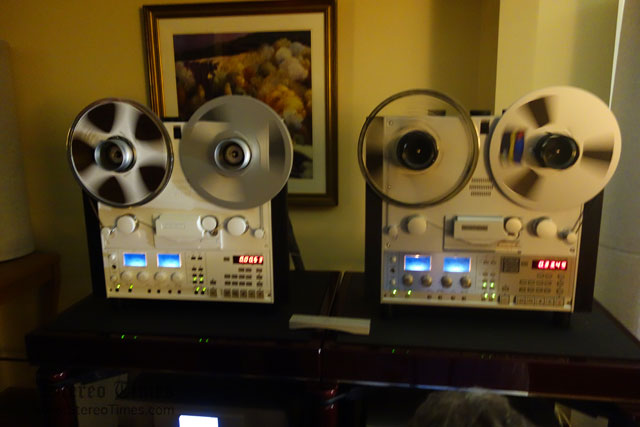
The new and strikingly attractive Von Schweikert VR-100XS loudspeakers ($140k) – driven by Constellation Audio Performance components and a pair of United Home Audio Phase 11 tape-decks serving up the music via a streak of master tapes – had me finally convinced that reel-to-reel is the real deal! I don’t remember all the songs or the order in which they were being played either. I DO remember these lyrics …thunder only happens when it raining. Players only love you when they’re playing. Fleetwood Mac’s Dreams on reel to reel sounded perhaps better than I ever recall hearing it. The light surrounding Stevie Nick’s vocals provided a depth of reality that astounded me. Needless to say, I came back each night as this rig was located only down the hall of the room I was staying in.
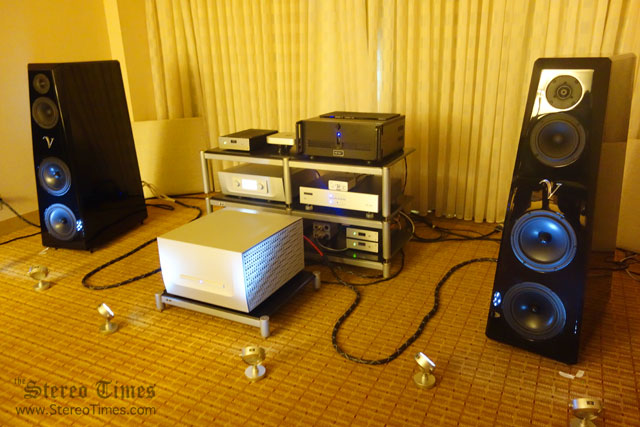
This smaller setup consisting of the VR-44s ($26k), were in an adjacent room using a single Constellation Centaur stereo amp and pre, produced a sound that wasn’t nearly as intoxicating as their bigger brother, but was nonetheless impressive.
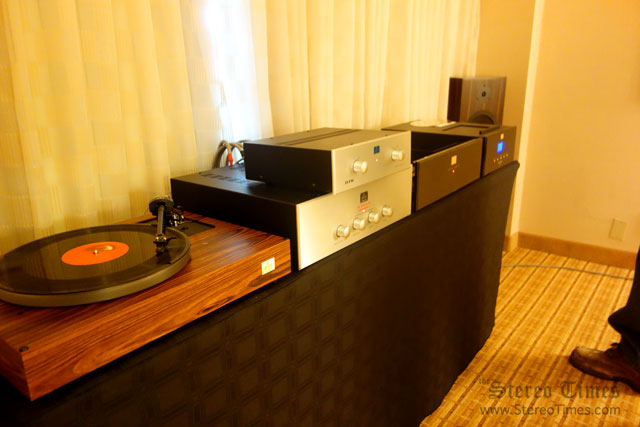
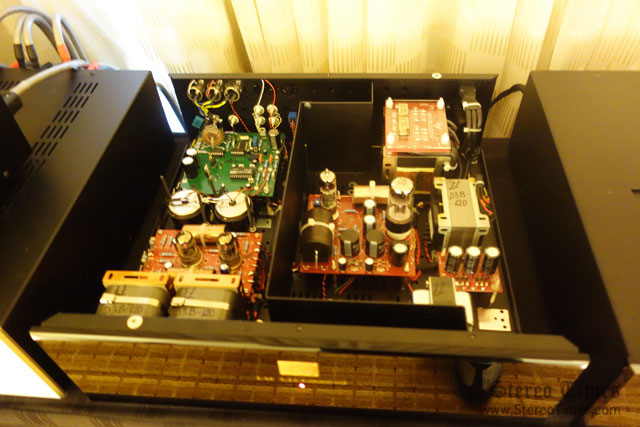
Of course, whenever I get the chance to sit before an all Audionote system, I usually do not pass up the opportunity. This system’s remarkable harmonic density and see-through qualities make it among the most I admire. Light in dynamic prowess and swing, it nevertheless woes me with its overall musicality.
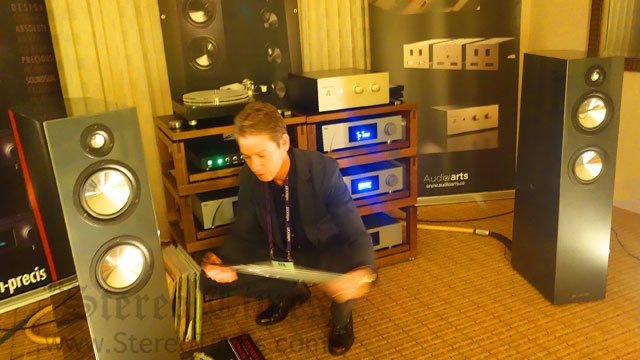
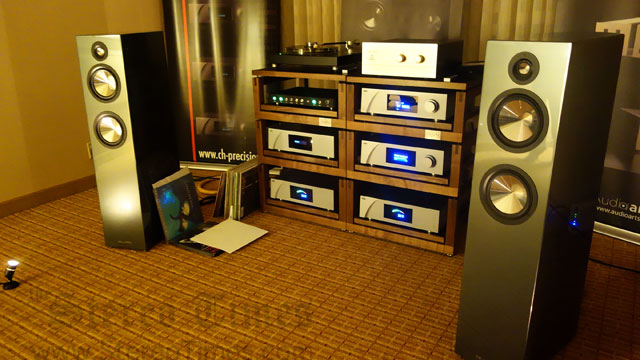
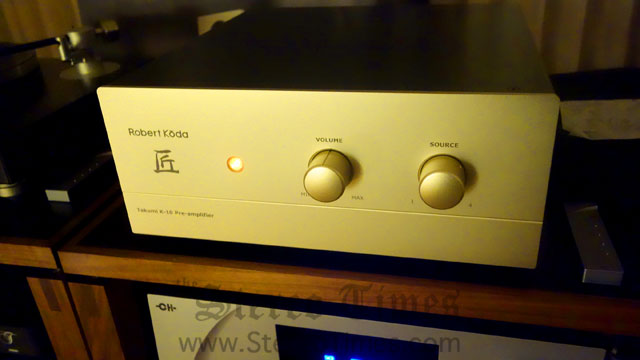

Gideon Schwartz of Audio Arts NYC, once again was going through his ever-growing vinyl collection. This year he introduced something new to his arsenal of elite high-end audio components. First, a newer updated “Purist Dueland Coil” version of the intriguing sounding Zellaton Grand loudspeaker ($50k). The system kept toes tapping and heads nodding in unison throughout the weekend compliments of a Robert Koda K-10 preamp ($31k), Holborne Analog 2 MkII ‘table, Dualpivot arm ($13,225), Jan Allearts Finish cartridge and Trinity phonostage ($34,750). I’m growing accoustomed to the excellence in ease and neutrality the CH Precision brings to the Grand loudspeakers. Once again, CH Precision’s A1 amplifier ($37,425 ea), Model D1 SACD/CD Player ($33k), C1 DAC ($33k) and X1 External Power Supply for D1 and C1 ($15k) possess an sparkling effervescence replete with proper fundamentals. This setup was challenged by size constrictions which kept the music a moderate listening levels. I still could hear the excellence that always attracts me to these very components. My goal in the coming months is to review these components in-house.
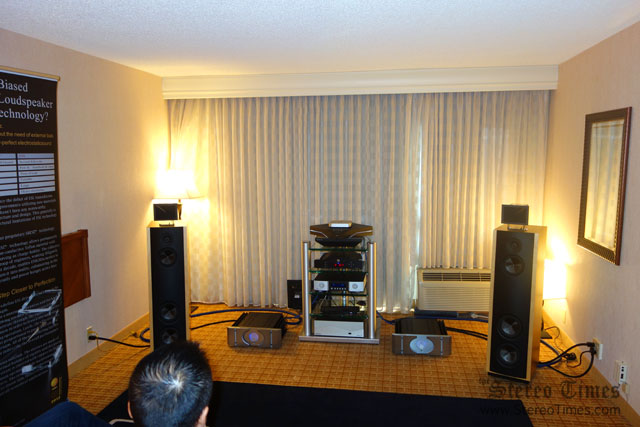
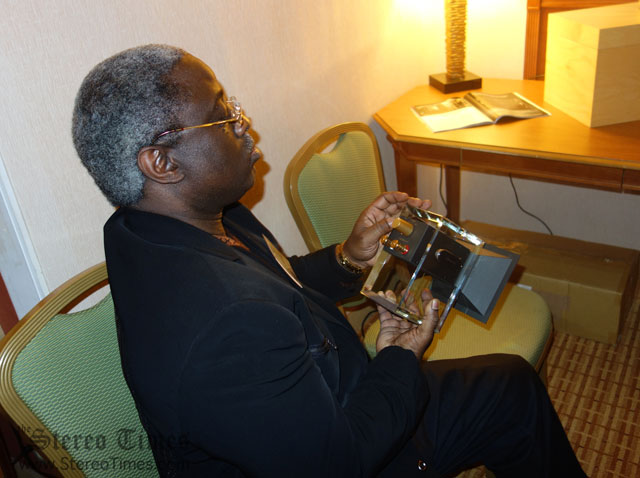
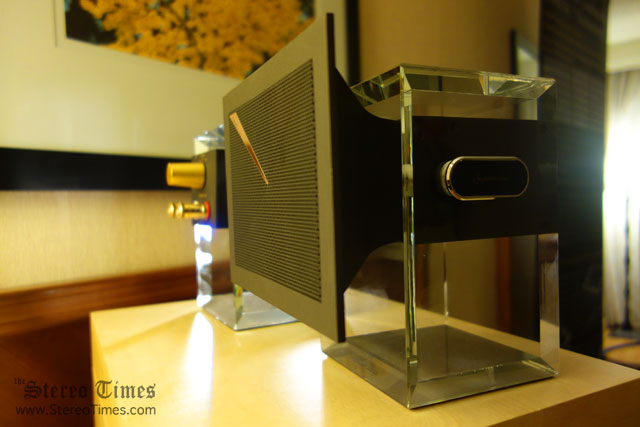
The ENIGMAcoustic Sopranino Supertweeter Don Shaulis wrote glowingly about (here) offered added extension to the mighty Magico V3 loudspeakers. Dr. Baker (middle photo), was intrigued by the On/Off demo performed in this room and had to take a closer look at this attractive looking and handsomely built electrostat. I’ve the Sopraninos in-house and will report on my impressions very shortly. So far, I am enchanted at the added sheen and purity they add to the top end of the TIDAL Piano Cera loudspeakers.
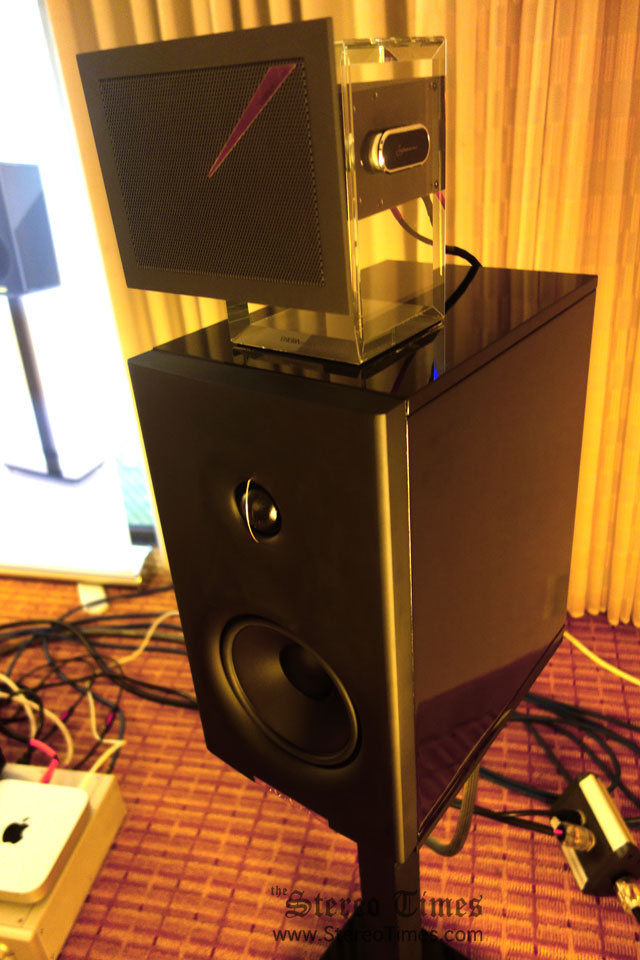
The ENIGMAcoustic Mythology M1 monitors are not cheap at $15k per pair, nor are they as expensive as a pair of Magico monitors. However, they come equipped with the Sopranino electrostatic supertweeters built in and as a result packs quite an extended and sweet top-end.
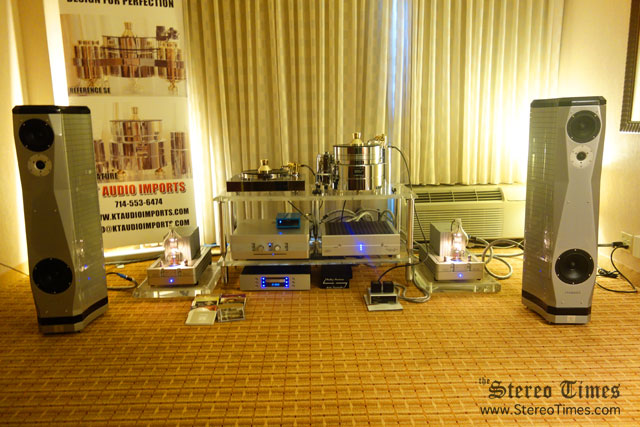
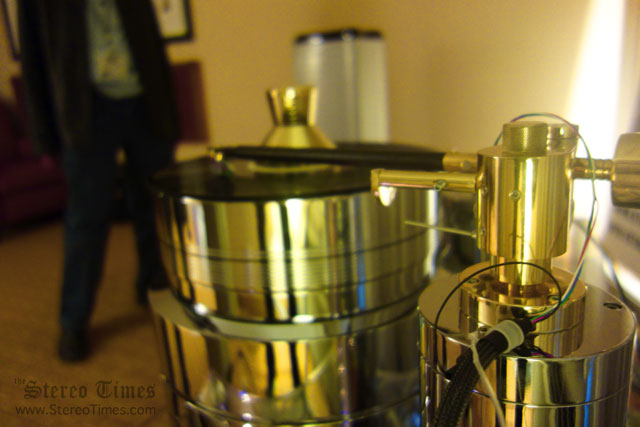
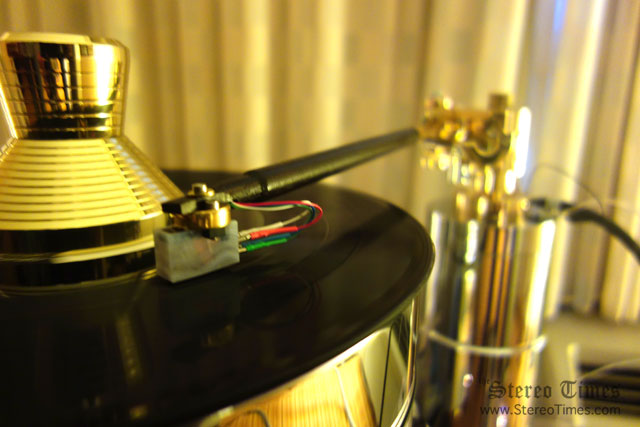
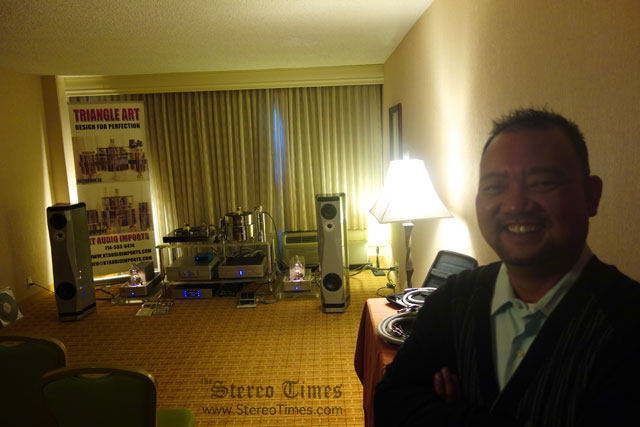
KT Audio Imports Tom Vu was all smiles after putting on a visual display that proved to be one of the few highlights at this year’s huge event. Vu is the person behind the gorgeous Triangle Art turntables and his Signature table ($16k) and Osiris 12″ arm ($5,800) were among the talk at this year’s show.
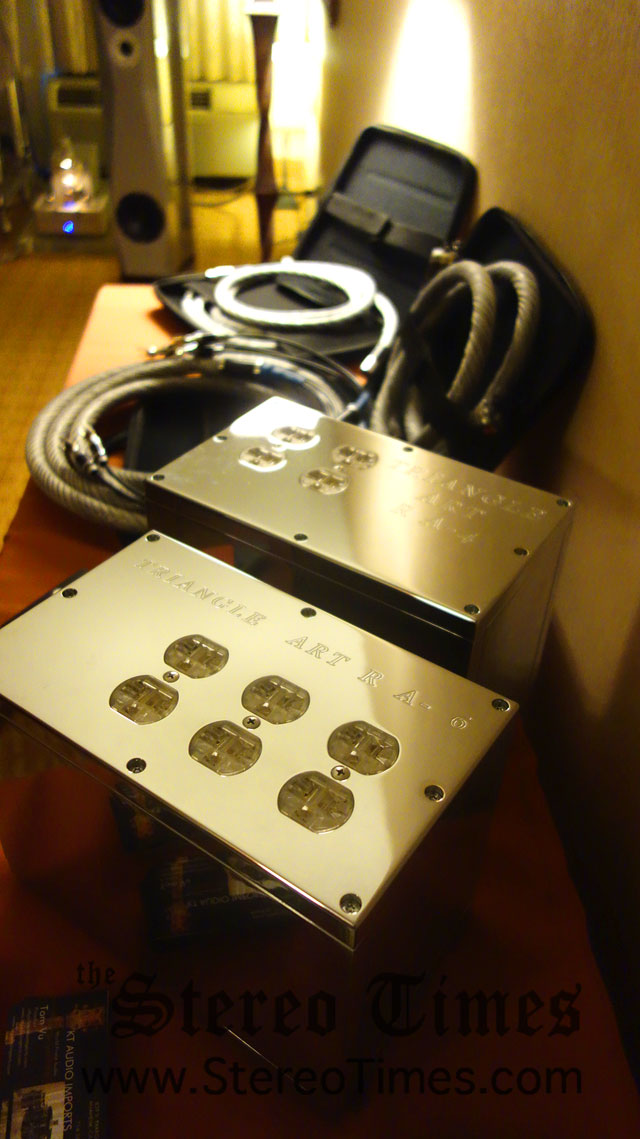
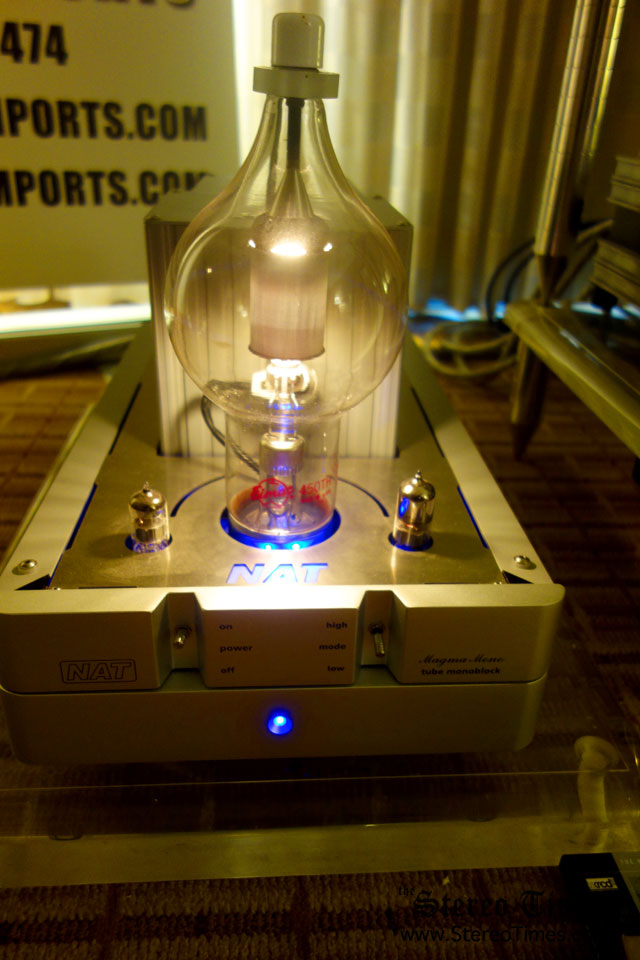
These NAT Magma mono amps, using the most unusual looking 450TH power tubes, drove a pair of Eventus Audio Phobos loudspeakers ($19,500), with an impressive show of grace and control. Most attractive was the overall sense of body, and rich harmonics that poured into this room. The Eventus loudspeakers can be uncharacteristically neutral compliments of their patented SACC (Simulated Anechoic Cabinet Construction), and as a result can sound lifeless when not fed top-tier gear. Maybe the NAT Magma creates that special synergy folks have been looking for. If that’s true, then Tom Vu is both smart, talented and lucky. You really can’t ask for much more than that in this life.
The rest of the system was composed of the NAT Magnetostat preamp linestage preamp ($17,500), NAT reference Phonostage ($10k) and Triangle Art speaker cable ($4890 per 8-ft), Isis interconnects and AC cords ($2890 ea). I also got a glimpse of Vu’s newest Triangle Art RA-8 distribution/AC conditioners ($3500). It is difficult, if not impossible, to get anything outside of average sound under stressful show conditions. Yet, the rooms I mention in my report have done the remarkable in getting better than average sound under such conditions. In my opinion, these rooms proved to be standout performers worth honerable mention here. Vu should be proud to be included in such a roundup for his room produced ample amounts of beauty bringing the Eventus to performed beyond what I had expected. Bravo.
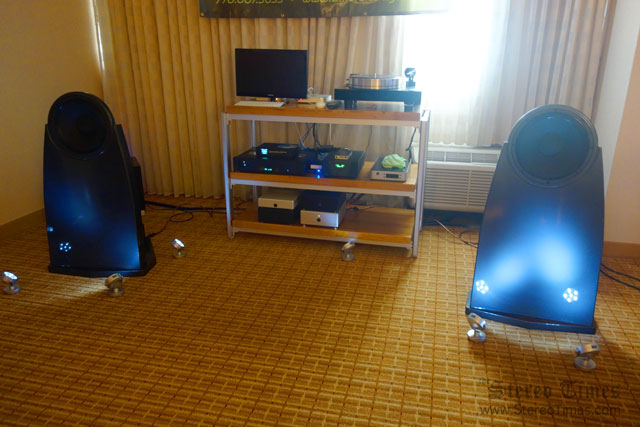

My guess is there’s no moss growing uder the feet of Walter Liederman, who fusses around at improving this already excellent sounding loudspeaker while he maintains another role: as chief owner and operator of Underwood Hifi, a retail shop located in beautiful Maui, Hawaii.
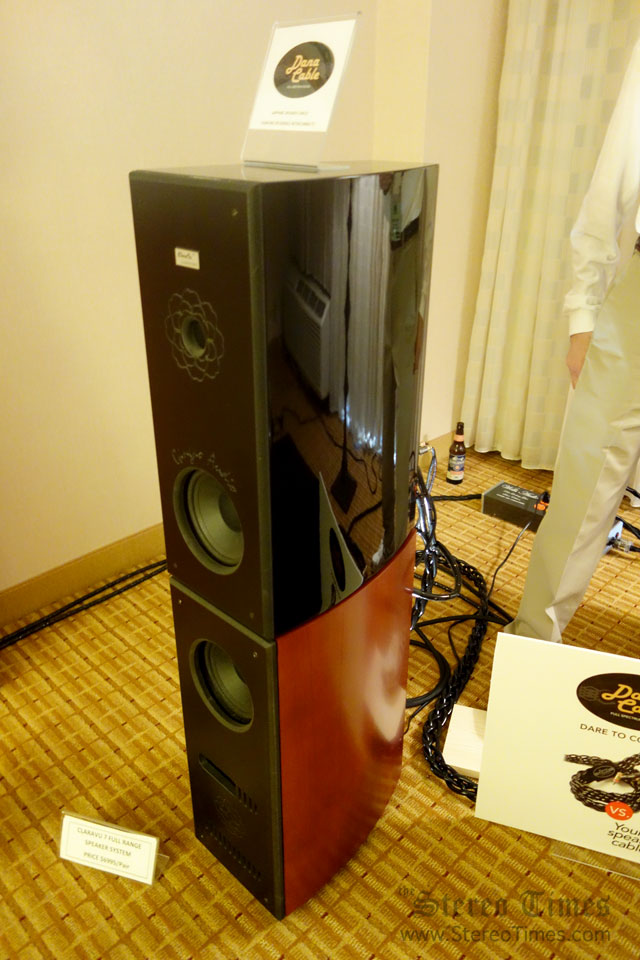
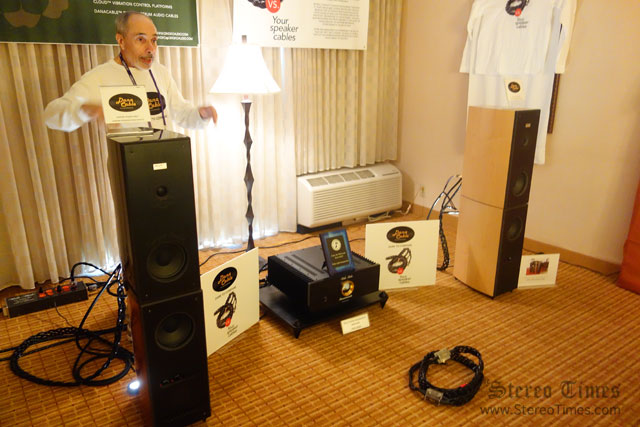
Really looked forward to hearing the Claravu Model 7 loudspeakers ($7k) from Ginko Audio. This attractive loudspeaker was driven by the Wells Audio Innamorata amplifier ($6500) but unfortunately, the listening time was spent going through a blind A/B test that featured a pair DanaCable Diamond speaker cables going up against another unknown brand. Mel Ginsberg (above) hosted this short impromptu demo using music that also was unknown to me. The problem with these type of experiements is they often can be problematic. Case in point – and much to Ginsberg surprise – I easily preferred the anonymous brand of cable over the DanaCable. I just thought it sounded less forward and analytical to these ears. Heck, our own Greg Simmons reviewed the DanaCable here and found them to be among the best he’s heard. Go figure.
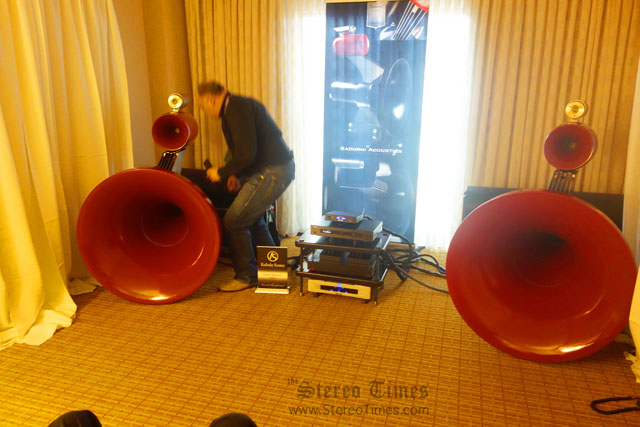
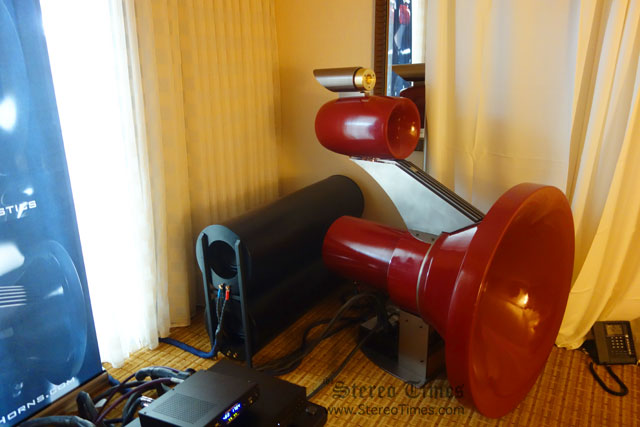
This attractively built 4-way horn system is the Staccato by Sadurni Acoustics and manufactured in Texas, believe it or not. Looks Italian to me. Funny, the designer says he’s of Mexican and Italian nationality. When I asked the price and heard “somewhere around $35k” I let out a good sigh. Finally a great loudspeaker that doesn’t have to cost as much as a new luxury sports car. The sound of the Staccato wasn’t bad either for the short time I spent in the room. Using modestly priced equipment no less: a modified Oppo BDP103 transport feeding a Mytek DAC while the bass amp was the Audiolab 8000. The tube amplifier was heavily modified Shunt Regulated 45 (both the driver and output tubes are shunt regulated). All cabling was by way of Kubala-Sosna. The sound had all the benefits horns are known for: super efficient (99 dB), dynamic, smooth and transparent as all get out. On a good note, I couldn’t detect any of the problems commonly associated with certain horn designs i.e., hollow and nasal, horn colorations and oversized images. Hope to see and hear from these guys again.
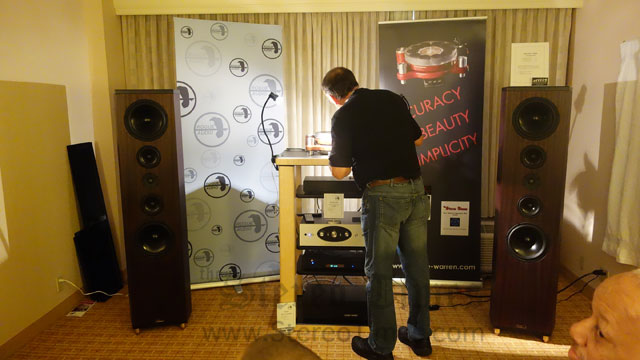
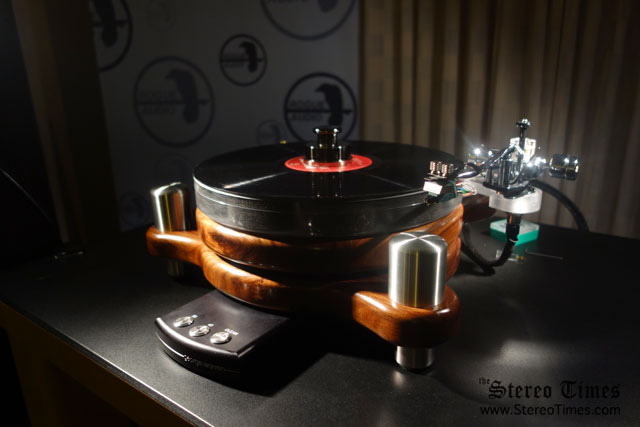
The George-Warren turntable looked quite elegant in this dimly lit room. Showing alongside Tyler Acoustics and Rogue Audio, it was nice to sit and just hear great music from remarkably good and affordable equipment.
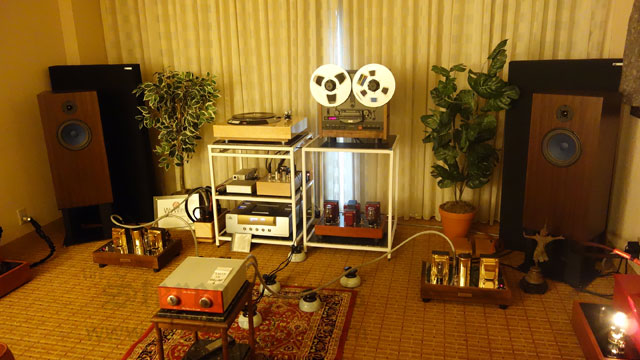
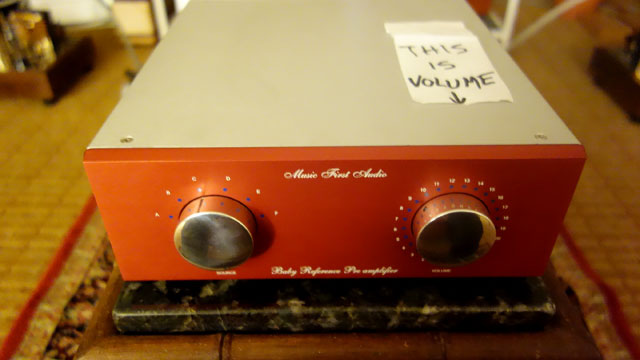

Stereo Times Masthead
Publisher/Founder
Clement Perry
Editor
Dave Thomas
Senior Editors
Frank Alles, Mike Girardi, Russell Lichter, Terry London, Moreno Mitchell, Paul Szabady, Bill Wells, Mike Wright, and Stephen Yan,
Current Contributors
David Abramson, Tim Barrall, Dave Allison, Ron Cook, Lewis Dardick, John Hoffman, Dan Secula, Don Shaulis, Greg Simmons, Eric Teh, Greg Voth, Richard Willie, Ed Van Winkle, Rob Dockery, Richard Doran, and Daveed Turek
Site Management Clement Perry
Ad Designer: Martin Perry





Be the first to comment on: Rocky Mountain Audio Fest 2013c